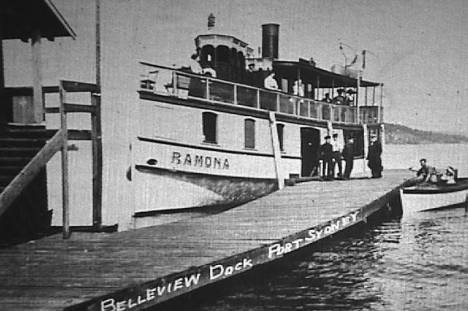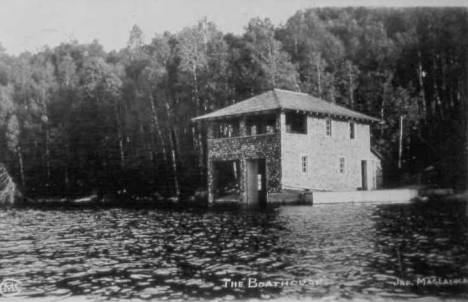Mary Lake
Mary Lake is the Jewell in the Crown of Muskoka. It lies in a NE to SW line halfway between Bracebridge and Huntsville and is part of the North Muskoka River.
Near to Highway 11, Mary Lake is home to stunning views, a public beach with boat access, flowing south through the scenic Port Sydney falls and dam.
The present lake basin was sculpted by the last ice age but the Precambrian rocks date back millions of years. Eight islands dot the lake and were likely volcanic pipes that were once buried deep in the ancient mountains. The largest of the islands is Crown Island and is the signature island in the scenery of the lake. There was a family called Crown who lived briefly in Port Sydney .The Indians thought of the island as the back of an otter. Deadman’s Island heads a line of islands starting in the northeast. Captain Cock lies buried there. Snowshoe and Forrest formerly called Rumball’s Island lie SW of that. Crown and the Isle of Pines with Rocky Island closest to Port Sydney are at the south end of the lake. Lawrence Island is the last one in the northwest part of the lake. It is named after a family who lived at the north end of the lake where Gryffin Lodge is located.
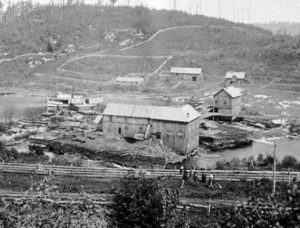
Indians travelled through this area regularly on their way to what is now Algonquin Park. Their families were frequently left on the shores of Mary Lake while the hunters went on to the north. The Indians were of the Rama Tribe and came from Orillia area. A chief by the name of Menominee camped on the lake in the 1860’s and 70’s.
The lake was surveyed by Alexander Murray in 1853 and he called it Mary’s Lake after his eldest daughter. It was not long after that in the late 1860’s that the first settlers arrived. By that time the areas close to Lake Ontario were well settled and rather than have the flood of settlers coming from Europe go further west, the government built settlement roads into the region. Cheap land and great stands of pine lured settlers into the area.
This began a period of thirty years where lumbering was the main activity around the lake. The settlers who thought that they could farm were soon disappointed after they cleared the land and found that the thin topsoil soon washed away. The pine trees belonged to the government and the only employment was in the forests and in the mills. The largest mill of the four around the lake was owned by Sydney Smith after whom the town was named and who was a benefactor to the town.
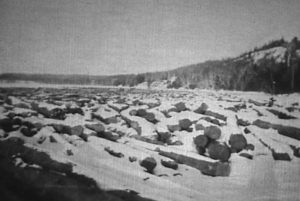
The town has become an attraction with its beautiful setting and its friendly people. The well-known welcoming sign says it is the “Home of 800 Nice Families and One Old Grouch.” The general store and annual turkey dinner tell a lot about the good feeling in the town.
By 1900 the clean beauty of the region began to attract city people from Toronto and from the sooty cities to the south of Lake Erie. People flooded the Muskokas to get away from the filth, smells and disease in the summers. Great lodges were built on the large lakes of Muskoka. This era of construction soon followed on Mary Lake. Clyffe House was built in 1905. Over the years 25 lodges and inns were constructed mainly centred in Port Sydney. Despite the fact that the town was by-passed by the railroad in 1886, steamships plied the lakes and brought vacationers to the lodges.
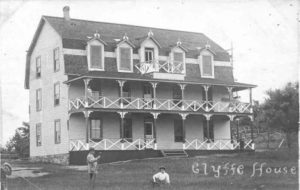
It was only natural that these visitors would want their own places around the lake even before the Great War cottages began to appear around the lake. Although few of these original ‘camps’ still exist, there has been a gradual infilling of available cottage land since. Because of the rocky shores, this development has been limited and the beauty of the scenery has been largely preserved. Shoreline development has also been limited by the establishment of several children camps since the 1930’s.
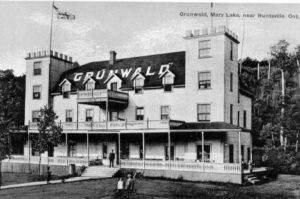
The most recent trend has involved replacing these old cottages with modern homes as more and more people are moving in from the city to live here full time.
Your Mary Lake Association is determined to preserve the best of the area’s past heritage and to make sure that future development pressures do not destroy the pristine beauty of the setting of our beautiful lake
